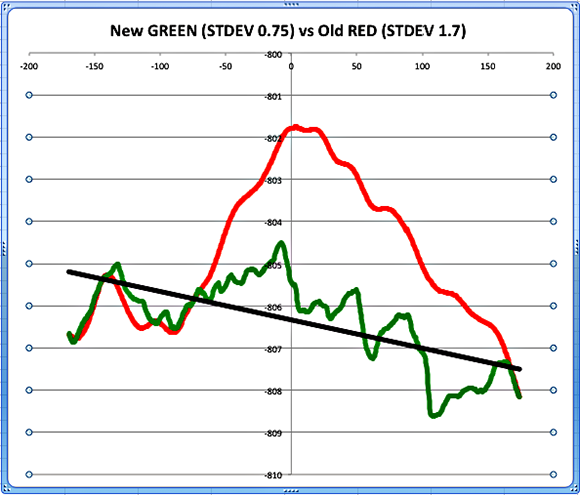Progress Report: Sub-Pixel Upgrade Cuts Errors in Half
This post compares our latest 3D results with results from November 2012 (3 months ago).
Our 3D models are generated by processing pairs of 2D images, and the same 2D images that were processed in the November post have been processed again. The only difference between the two 3D models is that new version was created using more sophisticated sub-pixel processing routines.
To compare the models we use the 3D program Scanalyze from Stanford. The models can be viewed with realistic coloring, but it is easier to compare them if they are given “false colors” In the video below, Scanalyze is used to display the latest 3D model (GREEN) and the older 3D model (RED). For the comparison we zoom into a part of the model that should be flat, and then we study the points in each model associated with line across this flat region. If the line is flat then the model is accurate, but any deviations from a straight line represent errors.
[embedplusvideo height=”480″ width=”640″ editlink=”https://bit.ly/1alfdjS” standard=”https://www.youtube.com/v/yumkXHgAniA?fs=1&hd=1″ vars=”ytid=yumkXHgAniA&width=640&height=480&start=&stop=&rs=w&hd=1&autoplay=0&react=0&chapters=¬es=” id=”ep9229″ /]
To evaluate the relative error of the two approaches we calculate the Standard Deviation (STDEV) of 750 points in each model that should define a straight line. The results below show that the errors in the new model have a STDEV of 0.75, and this is less than half of the November results with a STDEV of 1.7.
It is nice to see that the GREEN line is over 2x better (flatter) than the RED line, but we were hoping for an even larger improvement. Unfortunately we must accept the fact that better software can help reduce errors, but software cannot completely overcome the small errors that our current calibration “bakes” into the 2D images. The correct way to fix the problem is to bring sub-pixel precision to the rectification process of the original 2D images. We expect a much larger error reduction after implementing the new calibration/rectification process.

